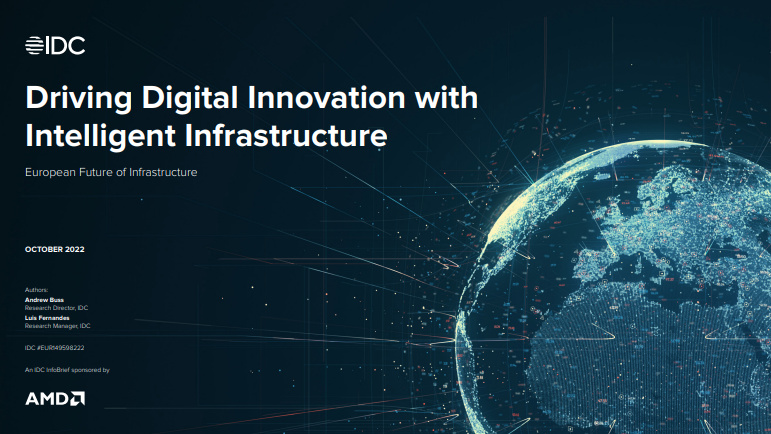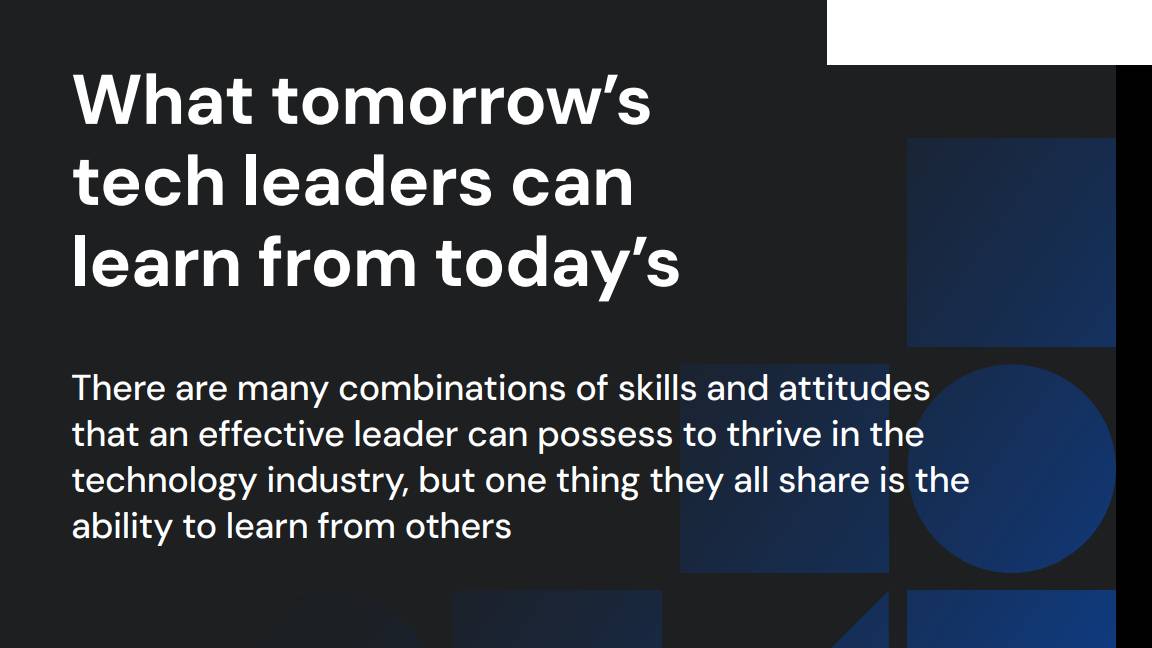Five strategic shifts to support ‘digital evolution’
Organizations must adopt a mindset of 'digital evolution' rather than transformation to succeed


In a post-pandemic world where we’re more connected than ever before and the rate of change is faster than it’s ever been, it’s time for IT professionals to move away from the concept of ‘digital transformation’ and instead embark upon a continuous journey of ‘digital evolution’.
As you will be aware, digital transformation is defined as a disruptive shift achieved via the digitization of non-digital products. In just a few short years, however, this concept has been jettisoned to the technology scrap heap – thanks in large part to the global pandemic.
Over a two-year period, organizations around the world were forced to pivot, and then pivot again. Now, organizations everywhere must adopt a mindset of digital evolution, the continual incremental adoption, and refinement of emerging technologies – or risk being left behind.

Greig Johnston is CEO at Vidatec and a former CTO. He has worked in the technology sector for over 25-years, buying and selling technology services. He specializes in helping businesses of all sizes develop digital strategies that deliver an exceptional end user experience on mobile and web.
RELATED RESOURCE

Driving digital innovation with intelligent infrastructure
Strong infrastructure investment is driving digital in all industries
There are numerous benefits to moving from a digital transformation to a digital evolution mindset. It’s generally more cost-effective to drive efficiency by evolving what you already have, rather than scrapping it and starting over. This approach is usually better for your people also so that they can improve familiarity before focusing on the next phase of innovation.
But how do you achieve this change – from digital transformation to digital evolution? Here are five strategic shifts needed to move your business from current to future state.
Setting clear objectives
Before you do anything else, bring your team together and collaborate on an agreed, long-range digital roadmap. This upfront investment of time will ensure alignment and clarity about your current or future state, how to get there, and with gaps identified.
It will also help you prioritize activities and set measurable success criteria. Finally, it will ensure you have identified key stakeholders (both internally and externally), which will enable you to engage the right people, at the right time, and in the right way.
ChannelPro Newsletter
Stay up to date with the latest Channel industry news and analysis with our twice-weekly newsletter
Digital estate mapping
Once you’ve created your digital evolution roadmap, map your existing digital estate – and keep coming back to it. This will help you identify patterns of overlap between your existing platform capabilities/features and uncover ways that platforms and data can come together to deliver new products, services and experiences for your customers and end-users.
The use of analytics and customer surveys can also play a key role in analyzing the effectiveness of your existing technologies.
Skills development is critical
A robust analysis of your objectives and technology capabilities is next. During this process, consider your existing web development expertise as well as the roles of UX, Service Design and Customer Research and Insights. Bring analytics and business intelligence, data engineering, and DevOps into the mix also.
Consider these roles in the context of your objectives and digital roadmap. If you need to upskill, redeploy, or source new talent, you’ll want to ensure relevant stakeholders are looped in and fully briefed timeously – and this will help.
Ensuring concise business alignment
The single best way to practice digital evolution – and maximize your investment – is to ensure full business alignment. To achieve this, an integrated approach is required, including having the right people and processes, a structured review process, regular communications and engagement, and a supportive workplace culture.
In moving from a siloed or singular to a connected and ongoing approach, you inevitably move from digital transformation to digital evolution.
Developing a financial mindset
With everything outlined so far, it’s hardly surprising to point out that digital evolution requires a different financial mindset – away from significant upfront investment and toward regular, sustainable long-term investment.
Invariably, digital transformation projects spend large sums, very quickly and in the early stages of the project because of the hunger to deliver big, and fast. But they usually ‘blow out’ and end up being scrapped. Instead, support digital evolution with sustained – and sustainable – long-term investment.
A good approach here is to develop a clear and concise business case against each objective on your roadmap. This will help you prioritize and budget, focusing spend where it delivers the most benefit.
Leaving digital transformation in the past and adopting digital evolution is essential for ensuring that businesses can continue advancing at a steady and sustainable pace in service of their customers, in line with the latest developments and with a people-centered approach.
Initially, it might feel like you’re swimming against the digital current, but it will ensure incremental, continuous improvement across your digital offerings.

Greig Johnston is CEO at Vidatec and a former CTO. He has worked in the technology sector for over 25-years, buying and selling technology services. He specializes in helping businesses of all sizes develop digital strategies that deliver an exceptional end user experience on mobile and web.
-
 Bigger salaries, more burnout: Is the CISO role in crisis?
Bigger salaries, more burnout: Is the CISO role in crisis?In-depth CISOs are more stressed than ever before – but why is this and what can be done?
By Kate O'Flaherty Published
-
 Cheap cyber crime kits can be bought on the dark web for less than $25
Cheap cyber crime kits can be bought on the dark web for less than $25News Research from NordVPN shows phishing kits are now widely available on the dark web and via messaging apps like Telegram, and are often selling for less than $25.
By Emma Woollacott Published
-
 What tomorrow’s tech leaders can learn from today’s
What tomorrow’s tech leaders can learn from today’swhitepaper AI impacts all sectors and is transformative for business, but what is AI and how does it work?
By ITPro Published
-
 Five steps for implementing predictive AI successfully
Five steps for implementing predictive AI successfullywhitepaper Predictive AI has a role to play in the data-driven business, but it will only perform well if it is properly implemented
By ITPro Published
-
 NHS leaders are keen to adopt new digital tools, but IT can't solve problems on its own
NHS leaders are keen to adopt new digital tools, but IT can't solve problems on its ownA survey of healthcare decision-makers finds they believe IoT devices and electronic health recording could help them reach more patients quicker
By Emma Woollacott Published
-
 Bringing order to the file management chaos plaguing AEC firms
Bringing order to the file management chaos plaguing AEC firmswhitepaper How a cloud-based solution, supported by edge technology, helps architecture, engineering, and construction firms boost performance and cut costs
By ITPro Published
-
 File data services to support modern manufacturing
File data services to support modern manufacturingwhitepaper Smart file data services deliver resilience and intelligence to the modern manufacturing organization
By ITPro Published
-
 Untethered: How CIOs and CISOs are paving the way for the new hybrid workforce
Untethered: How CIOs and CISOs are paving the way for the new hybrid workforceWhitepaper Effective techniques to transition from exposed legacy infrastructure to an effective zero trust strategy
By ITPro Published
-
 Sidestep project failure by building all-star delivery teams
Sidestep project failure by building all-star delivery teamsWhitepaper How to inspire talented people to work together to achieve success
By ITPro Published
-
 Creating successful supply chain planning transformations in the consumer industry
Creating successful supply chain planning transformations in the consumer industryWhitepaper Think differently about SCP transformations and, in doing so, move into a better future for supply chains
By ITPro Published